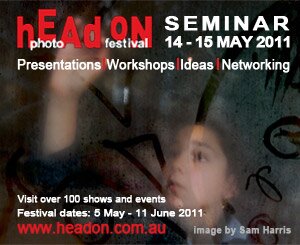|
 Digital Camera Review by: Katrina Putker Digital Camera Review by: Katrina Putker
The 14.2-megapixel tilt-screen Alpha 380 is the new and improved version of Sony’s a350 DSLR which, being originally released onto the market in January of 2008, was due for a minor upgrade given that in DSLR terms anything 18-months and beyond is practically considered old.
This unit is one of three newly released DSLRs in the Sony range (alongside the a230 and the a330) and as its name suggests, the a380 is the new Mack Daddy of Sony’s entry-level units.
Despite sharing many of the same features as its only slightly less advanced siblings, the a380 takes a leap from 10.2 to 14.2-megapixels although this remains unchanged from its predecessor, the a350.
In fact, one could certainly be forgiven for initially questioning the true need for the upgrade at all given the amount of features, settings and general specifications that have remained unchanged from the a350 and in many cases, changes have been made in a way that essentially ‘dumbs down’ or at least simplifies the a380 to a degree.
Take for example the removal of the Kelvin (daylight/neutral) white balance option and the ability to bracket for white balance.
The disappearance of these options helps to explain the colour shift problems occasionally suffered by the a380, which also exist as a result of the highly saturated and contrasty standard colour settings Sony have created as the default.
While some users may enjoy the often punchy and emphasised colours produced by the a380, others will need to experiment with the in-camera settings in order to determine those that offer them more neutral, true-to-life results.
On the positive side of things, the a380 is some 125g lighter than the original a350 model and has slightly smaller dimensions as a result.
A newly styled interface has been created along with a helpful array of on-screen tips and guides to assist the new DSLR user in the new and more advance style of photo taking at their fingertips.
The a380 has shifted away from using CF cards (as in the a350) to SD/SDHC and Memory Stick Pro Duo cards although recording to both formats simultaneously is not a possibility unlike with some competing DSLR models.
For some reason, the battery life is less with the a380 and offers only some 500 shots per charge as opposed to the a350, which offered an additional 200+ shots on top of that.
The AF system seems to have been improved however with speedy general focusing and as a result of Sony’s unique live view system, users will notice the same speedy auto focusing in live view mode as well, which is currently unmatched amongst competing DSLRs in this entry-level class.
Unlike its competitors, the a380 uses a small secondary sensor to provide the live preview and as such is able to do so with the reflex mirror down.
While this does mean that ten percent of the scene is sacrificed during live composition, it allows for quicker focusing and shooting in live view mode and therefore an experience more akin to that of a compact camera, which a380 buyers are more likely to be familiar with.
Another welcome addition on this unit is the HDMI port, which is fast becoming a must have amongst the DSLR market as the rage to view both moving images and stills in high definition continues to surge.
For those with standard television sets however, the exclusion of a regular TV output on the a380 means you’ll have to visit a friend or neighbour to view your images and play slideshows as your ‘ancient’ technology is no longer catered for.
In terms of in-camera viewing and shooting, the a380 is mounted with a 2.7-inch, 230,000-dot tilt-screen LCD that easily allows for controlled shooting overhead or at the hip.
Moveable screens are undoubtedly becoming more and more popular as they extend shooting possibilities even further and while the a380’s screen can prove somewhat stiff and awkward to maneuver at first, regular use should quickly see this become a non-issue.
The pop-up flash unit fires with slightly less power than the original a350 although it still appears to balance exposure well and sufficiently light up most scenes where the subject is within reach.
The physical motion of it popping however, is somewhat violent against the face and eye socket when composing using the optical viewfinder and it makes quite a conspicuous noise as it pops and thus is not ideal to use when shooting animals, babies, weddings, formal speeches etc. when you need to be as quiet and as unobtrusive as possible.
To look at, the a380 is a good looking camera with clean lines, a few sexy curves and in general, quite a minimalist approach especially given its DSLR status.
As with the a230 and the a330, this unit has a handgrip that is thinner and shorter than most and as such may not suit all users.
Having said that, the thumb grip section is very ergonomically friendly and the textured rubberised surface moulded to this section is effectively tacky to help further assist in a sturdy hold.
For DSLR first-timers, the image quality of the a380 is likely to impress and astound, particularly given that the assumption that they’ve come directly from the compact camera realm.
Colours are punchy, sharpness is good overall and lower end ISOs between 100-400 produce crisp, smooth images that are favourable to the eye.
For those who have a greater knowledge of, and eye for, colour accuracy however, the a380 will underperform from time to time producing relatively obvious colour shifts as a result of the highly saturated and contrasty default settings Sony has created.
Given time, patience and a fair bit of experimenting, the settings can be adjusted to better suit a more neutral colour palette although in truth, an untrained eye is unlikely to notice and as said, will probably thoroughly enjoy the signature look of the a380 images.
While there is certainly nothing that screams, “No, don’t buy it” with regards to the Sony a380, unfortunately there is nothing that really screams, “This is the most highly recommendable entry-level DSLR on the market” either.
Indeed it is a solid performer with high resolution, tilting screen, speedy live view and general focusing, a selection of manual, semi-manual and preset scene modes and it is packaged into a neat and fairly compact unit given its array of capabilities.
So, overall this unit performs well and is certainly user-friendly and should be thrown in the mix when considering which DSLR within your budget you’re looking to purchase.
Certainly if you own a Sony Bravia TV, one of the Alpha units is a must for beautiful and easy remote control display of your image slideshows and if your budget is over the $1,500 mark then the Mack Daddy of the Alpha range, the a380, would be the unit to consider.
| Appearance rating |
4 stars |
| Functionality rating |
4 stars |
Image quality
|
4 stars |
Lens quality
|
3.5 stars |
| View finder / LCD screen |
3.5 stars |
| Value for money |
4 stars |
| RRP (AUD) |
$1,299.00 Single Lens Kit
$1,599.00 Twin Lens Kit
$1,449.00 Single Lens Kit with GPS unit, for geotagging of photos
|
 |
|
| Effective Pixels |
14.2 megapixels |
Image Sensor
|
23.5 x 15.7mm (APS-C type) with RGB primary colour filter |
| Image Sizes |
3 Sizes |
| Resolution Settings |
(Aspect ratio 3:2) L(14M):4,592x 3,056; M(7.7M): 3,408 x 2,272; S(3.5M): 2,288 x 1,520
(Aspect ratio 16:9) L(12M):4,592 x 2,576; M(6.5M): 3,408 x 1,920; S(2.9M): 2,288 x 1,280
|
| Manual Focus |
Yes |
| Auto Focus |
Yes |
| Aperture Priority |
Yes |
| Shutter Priority |
Yes |
| Shutter Speeds |
1/4000 sec. -30 sec., bulb |
Exposure Metering System
|
TTL metering (Multi Segment, Center-Weighted, Spot) |
| Exposure Modes |
Program AE (AUTO, AUTO with Flash Off, P), Aperture priority, Shutter priority, Manual |
| ISO |
Auto, 100 to 3200 (in 1-stop increments) |
| LCD Monitor |
Yes |
| LCD Size |
2.7-inch (100% field of view), 230,400-dot TFT, Clear Photo LCD |
| Viewfinder |
Yes |
| Hot Shoe |
Yes |
| White Balance |
Auto plus 6 Modes (Daylight, Shade, Cloudy, Tungsten, Fluorescent, Flash); +/- 3-step adjustable Kelvin temperature control (2500-9900k w/19-step Magenta/Green compensation). |
| Self Timer |
2, 10, off |
| HD Movie Option |
No |
| Movie Sizes |
No
|
| Video Out |
No
|
| Storage Type |
Memory Stick Pro Duo, Memory Stick PRO-HG Duo, Memory Stick PRO-HG Duo HX, SD Memory card, SDHC Memory card |
| Still Image Format/s |
JPEG (DCF2.0, Exif 2.21), RAW (Sony ARW 2.0 format), RAW + JPEG
|
| Movie Image Format/s |
|
| Audio Format/s |
|
| Connectivity |
USB2.0 Hi-Speed (mass storage mode / PTP mode)
|
| Power Source |
AC adaptor - AV-PW10AM (optional) |
| Battery Options |
NP-FH50 |
Battery Life
|
Approx. 500 shots(OVF)
Approx. 230 shots(Live view) (CIPA measurement)
|
| Dimensions |
(W) 128 x (H) 97 x (D) 71.4 |
| Weight |
490g (not including battery, memory card or accessories) |
|












